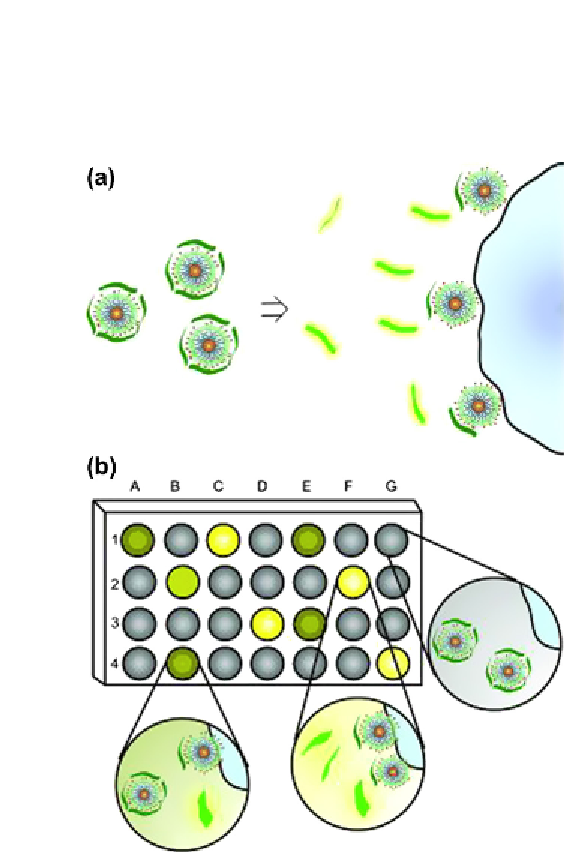Biology Reference
In-Depth Information
when in a test strip format. A similar approach was taken by Jung et al. who
utilized a graphene oxide (GO) surface, and a secondary AuNP label, which
binds to captured rotavirus, and quenches the GO surface fluorescence
through FRET.
28
Figure 9.4
Design of the nanoparticle-conjugated polymer sensor array. (a) Schematic
representation of the displacement of anionic conjugated polymers from cationic nanopar-
ticles by negatively charged bacterial surfaces. (b) Schematic illustration of fluorescence
pattern generation on a microplate. In case of release from the nanoparticle, the initially
quenched para-phenylethylene (PPE)s regain their fluorescence. The fluorescence response
is dependent upon the level of displacement determined by the relative nanoparticle-PPE
binding strength and bacteria-nanoparticle interactions. By modulating such interactions,
the sensor array may generate distinct response patterns against different bacteria. In the
diagram, A-G on the microplate represent bacteria of different types, and codes 1-4 repre-
sent the PPE-nanoparticle constructs. Source:
Reproduced with permission from Ref.
27
.
(For
color version of this igure, the reader is referred to the online version of this topic.)

Search WWH ::

Custom Search